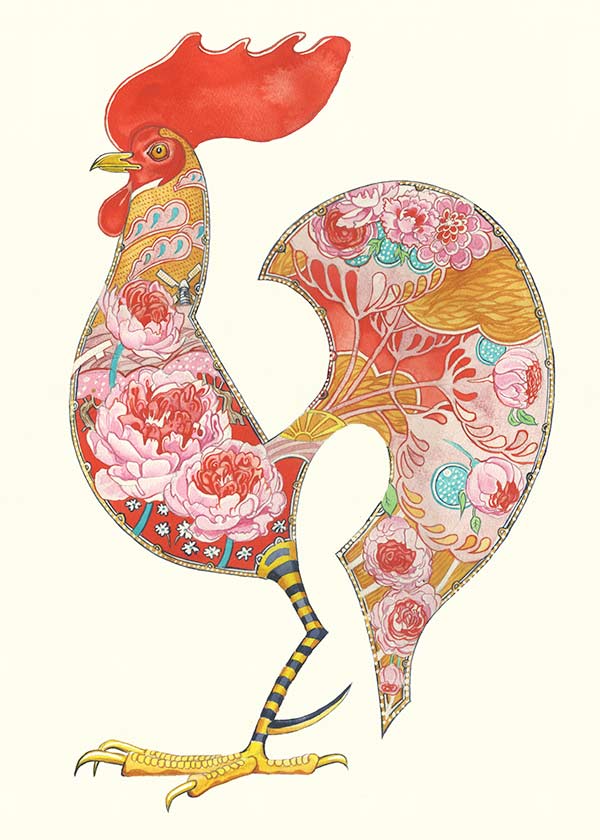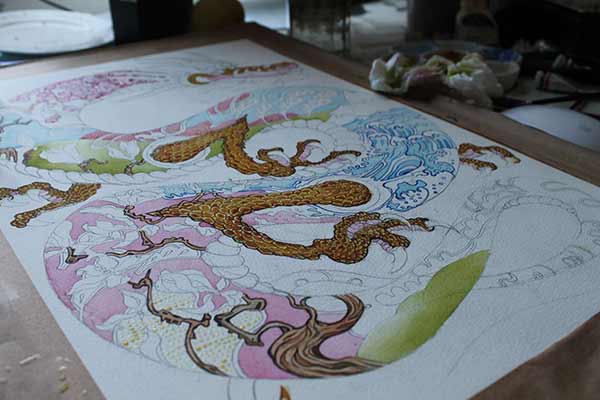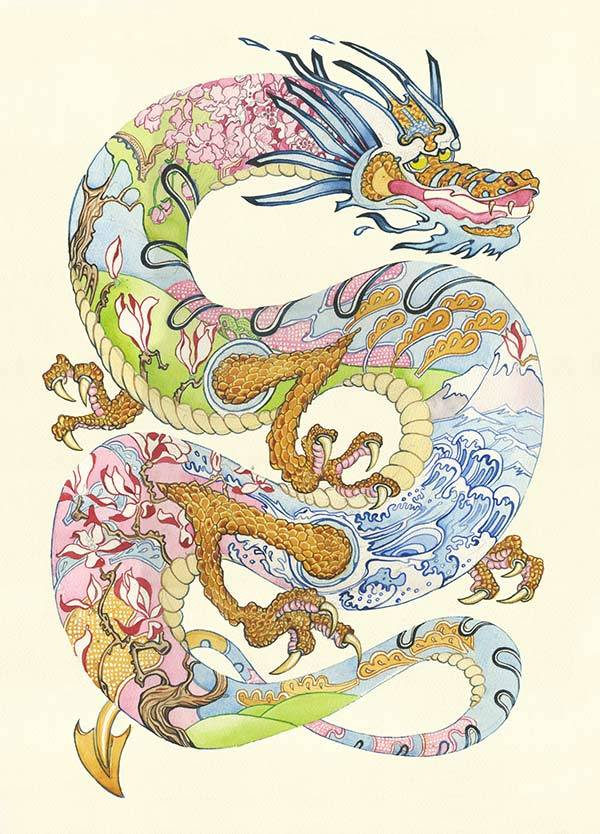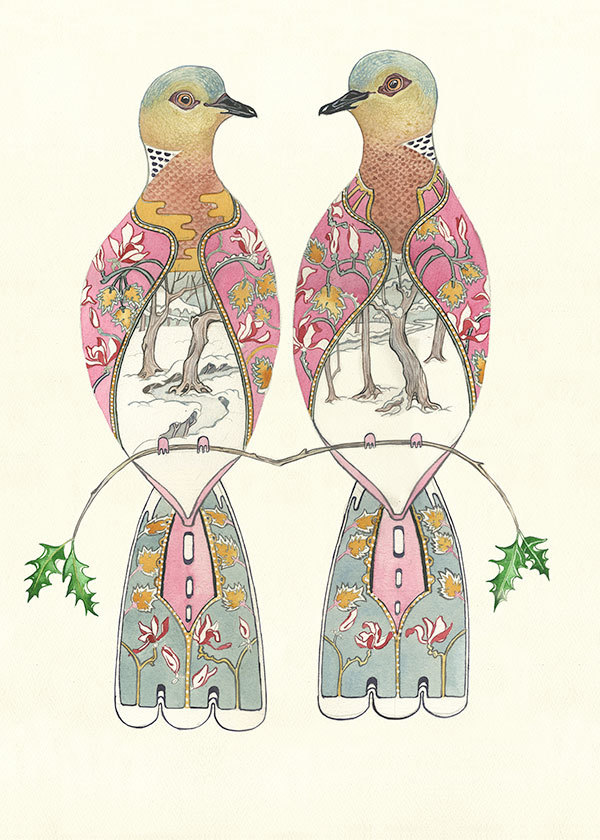Hello,
My blog has moved to a new location. It is now holed up on my website.
If you would like to see it or subscribe come here. http://www.thedmcollection.com/blogs/news
All the best
Daniel
Hello,
My blog has moved to a new location. It is now holed up on my website.
If you would like to see it or subscribe come here. http://www.thedmcollection.com/blogs/news
All the best
Daniel

Image © Daniel Mackie
Being a prime tourist location, Greenwich Market is a fantastic place to share Daniel’s illustrations with people from across the globe, and I always find it interesting to see how people from different cultures relate to the various animals. As you may guess, the likes of dogs and cats are universally popular, but like abandoned pets in a rescue centre, there’s a home for every creature in The DM Collection; so which feathered friend do you think frequently gets to travel across the English Channel to France? The magnificent Rooster, or ‘Le Coq Gaulois’!
But why do the French like the Rooster so much? Well, it all started in ancient Rome, when one of their historians, Suetonius, noted that the latin translation of Gaul, (gallus), had a double meaning, as not only did it translate as inhabiter of France, but it also means cockerel, or rooster. Over the ages this play on words stuck to the people of France like glue, but what really propelled the rooster up to emblem status, was when it was pictured on the flags as a symbol for the French Revolution. Today you’ll see Le Coq Gaulois proudly displayed on the shirts of their national ruby and football teams, and fearlessly strutting his stuff alongside the touchline as the French mascot.
Sure enough, this bold and beautiful fowl is certainly an animal to be proud of: but hang on a minute, has anyone ever stopped to think where roosters and hens actually come from? Well, it turns out that these domesticated fowl are actually related to a bird known as the Red junglefowl, originating in South East Asia. Noted for their steady supply of eggs and palatable meat, it is said that they first started to domesticate the junglefowl over in India, as far back as 3200 BC: and if we go back even further – and I mean a lot further – we discover that the Red Junglefowl is… (drum roll please) … is … the closest living ancestor to the Tyrannosaurus-Rex!
So who are you calling ‘chicken’!?
Buy cards and prints at The DM Collection

Image © Daniel Mackie
This is the first Mythical beast I have painted! I keep getting asked to do a unicorn, but I can’t quite bring myself to do it! Dragons Have much more punch, in particular Chinese Dragons! This one is a three clawed dragon and was used in ancient chinese culture to represent the common people. A five clawed dragon represented the emperor.
A long time ago well, 1987 there was a discovery of a dragon statute in Henan that dates back to about 5000 BC. The chinese dragon classically takes on a snake from and is associated with water. Down through the ages The dragon came to represent weather and water and unlike European folklore where dragons are fire-breathing monsters, the chinese dragon represents power, strength, good luck and imperial authority.
It is unclear why the Chinese dragons have an association with water but they are believed to be the rulers of bodies of water such as seas, rivers, lakes etc.. There are four major dragon kings, representing the four seas, these are the east, west, north and south seas. In modern China these are the East China sea, South China Sea, Qinghai Lake and Lake Baikal.
for me this composition was all about the snake form, in fact while doing it I thought it might make a good composition for a sausage dog! I do like painting water, cerulean blue was used here and my two favourite colours , Rose madder Genuine and Quinacridone gold..,mmmmm lovely!

Image © Daniel Mackie
It is my intention to do more mythical creatures, greek mythology is full of them, perhaps the three-headed dog Cerberus, who guards the entrance to the underworld?!
Buy this design and others as cards and prints at The DM Collection

Our New Year’s resolution is renew our Twitter and Instagram accounts as well as email our customers and fans more regularly. Please do find and follow us as we share more of the illustrations, inspiration, design process, product development and DM Collection news in general.
Always a bright spot in a cold drab winter, the robin’s appearance is a sign of warmth returning and the winter inching towards a new spring. Some Native Americans see the bird’s red breast as a sign of the dawning red sun and the bright yellow beak of our robin’s American cousin is seen as the sun’s rays. The cheerful songs it sings have certainly been a ray of sunshine for many a hardy winter gardener as they dig over muddy soil.
Our robin design perfectly captures this juxtaposition of a dull winter with new hope. The brown, windswept landscape and grey cloudy sky along the bird’s back is being encroached upon by the bright pink roses that are growing up the bird’s chest towards that open beak, chirruping its enlivening song. The slender branch our robin is perching on is still bare, but its delicate tips will soon burst into bud.
And where will we be when the spring truly comes and our cheerful robin goes unnoticed in the chorus of less hardy songbirds? At the DM Collection, some exciting new designs are already being sketched out. It will take a while longer to see what final versions emerge, but we hope to share them before the spring is over. Sign up to our newsletter (at the bottom of the website) to see the designs as they emerge, and find us on Twitter or Instagram if you’re not following us already.
And what’s your resolution for 2016? Take a look through the Collection for the design that most inspires and motivates you – do tell us which one you choose. Though you can’t do much better than the robin as the ultimate motivator: as well as encouraging us with its cheerful song, as we learnt in our previous blog, this chirpy little creature will peck another to death if provoked! Something to bear in mind when our resolve weakens…

Image© Daniel Mackie
One interesting characteristic of this mythical Japanese fox is its ability to grow more than one tail: with the oldest and most powerful having up to as many as 9 brushes! But they are only ready to start growing additional tails once they’ve reached the ripe old age of 100yrs, (which slightly goes against the grain in naturalistic terms, as the real traumatic life of a wild fox generally spans a mere 3 years, but they can reach the age of a domestic dog under the right conditions). Once a mythical kitsune finally does grow a 9th tail, they also acquire untold wisdom, gain the handy ability to hear and see all that is happening in the world, and its red coat turns to an enchanting shade of silver or gold.
Another interesting gift of a kitsune who’s reached the centurion mark, is its learnt ability to take the form of a human being. This can only occur if they follow the ritual of placing either a broad leaf, some reeds, or a skull over their head. Once they’ve managed this they are usually known to morph into very attractive females, (‘foxy lady’ indeed!), and throughout medieval Japan, any woman who was seen on their own at dusk or at night could have potentially been a kitsune.
If you are ever under the impression that a person is secretly a kitsune, you could test your suspicions by offering them some deep fried tofu, (true kitsunes can’t get enough of it!): you could also introduce them to a pet dog, and if they run a mile they are for sure a fox in disguise: or you could get them tipsy on saké, as careless kitsunes have difficulty hiding their tails when under the influence.
Cards and prints of this design and others are available at The DM Collection

Image © Daniel Mackie
Badgers live underground in setts which they inherit from previous generations; some can even be over a hundred years old. They’ll continue to clean, maintain, improve, and develop these dwellings as they see fit, (no town council permission required), and can often house an elaborate tunnel network which connect numerous sleeping and breeding chambers. The world record for the largest badger sett goes to our very own European badger, Meles meles, which involved a sett composed of 50 chambers, 879 metres of interlinking tunnels, and an astonishing 178 entrances! Being extremely experienced underground dwellers, they even know a thing or two about water drainage, and you’ll find that 9/10 setts are situated on slanted ground; maybe this once lead the good folk of Yorkshire to allegedly believe that the legs of a badger were uneven on one side so they could easily run alongside hills!
This elusive relative of the weasel mostly likes to reside in woodland, especially if there are bluebell shoots to eat in early spring, but like ourselves, being omnivores, they’re also partial to something slightly more substantial to go with their greens, so what’s really ideal is to have a woodland sett which backs on to fields: here, with a multitude of entrance holes, they can capitalise on all there is to offer; including a freshly ploughed field where they can spend their nights dining on hundreds of earthworms.
Unlike its African cousin, the Honey Badger, Meles meles isn’t a fearsome lunatic, and although the red fox will show him some well deserved respect, (have you seen those claws!), it has been known for foxes, and even rabbits, to share the unused quarters of a well developed badger sett – although the rabbit might just want to make itself scares if Mr Badger runs out of worms to eat.
 Photo © Harry Miller
Photo © Harry Miller
‘There’s no security, or peace except underground. No, up and out of doors is good enough to roam about and get one’s living in; but underground to come back to at last–that’s my idea of HOME’.
(Thoughts from Mr Badger in Kenneth Grahame’s enchanting novel: ‘The Wind in the Willows’).
Buy cards and prints of this design and other woodland creatures at The DM Collection

Image © Daniel Mackie
Many cultures have stories and fables about foxes being tricky and sly, and this one keeps with that theme. But Aesop’s fable suggests that the Hare in this tale already knows the fox is untrustworthy, but still out of deadly curiosity wishes to know more… mmmm, the fox sensing an opportunity suggests the Hare comes to his house for “Dinner”. Now there is the red light Mr Hare!
The hare in this fable pays with his life for not using caution to stem his desire to know about the foxes nature. Rudyard Kipling was probably aware of this fable. He illustrated this in his Just so Story, The “elephants childs” curiosity leads him into a deadly situation with a crocodile.
I often work on more than one painting at a time, generally I have three on the go at any one time, I usually draw them all out first and once i am happy with the composition etc I then paint them one by one, This seems to have the effect of linking the ones I do together as they often has similar colours or motifs. I used to do four at once but one always turned out to be a stinker!
I did these two together, both painted on Saunders Waterford watercolour paper stretched on the drawing board. As you can see, Rose Madder genuine and Quinacridone Gold Feature in both of them, although I did use Prussian Blue in the fox, This colour is becoming favourite! The blue in the hare’s body is cerulean blue mixed with Davy’s Gray.

Image © Daniel Mackie

Image © Daniel Mackie

Image © Daniel Mackie

Image © Daniel Mackie
These two designs are available as cards and prints at The DM Collection

Image © DanielMAckie
“Hooray! Let’s do it again.”
… ugh! where’s the sherry!!
Yes it’s nearly that time of year again, where every respectable Partridge, (if they know their worth), should frantically search out and scramble up the ever elusive pear tree. In doing so they create and complete the most extravagant Christmas present known to man!
But if you are scratching around for Christmas present ideas, you’re better off heading to the market, because you’d do very well to actually come across a ‘partridge in a pear tree’. If you were to spot one of these birds, you’re more than likely to find them on their feet rather than the wing, as they like to spend most of their time pecking around on farmland for seeds and insects. They also nest on the ground; and all being well they are very successful at it too, as these magnificent hens produce one of the largest clutches of eggs know to man – potentially up to 22!
If you do approach a partridge, (with grand ideas of pear trees and ‘Eleven Lords a leaping’), they will rightly try to escape: at first by hot-footing it – where they are actually very good at selecting their get away route, carefully putting obstacles such as stones and foliage in the way of the pursuer – or as a last resort they will take to the air, but with their short wings and plump stocky bodies, it is in dramatic and exhausting fashion, and they’ll be keen to come back to earth as soon as it’s safe to.
You will find one explanation as to why the partridge is mostly ground dwelling and reluctant to take flight in Greek mythology, where the first ever partridge appeared when Daedalus threw his high achieving nephew, Perdix, from a cliff in an envious fit of rage. Upon witnessing this, the Goddess Athena saved the tumbling victim by turning him into a bird, (hence the latin term for the partridge is Perdix perdix). Following this traumatic experience, and remembering all too well his near fall to death, the partridge is generally very wary of high places, chooses not to take long flights, and does not nest in any tree; and yes, you can tell your ‘true love’ that this does include the pear variety!
buy greetings cards of the and other designs like it at The DM Collection
A lot of this woodland survived for 7000 years up until medieval times: but by then more and more trees were being felled to make way for farmland, as well as for fuel and ship building. What made matters worse for the native squirrel was their very own dashing red fur coat, and squirrel pelts were in high demand; especially with the ruling classes. This is in contrast to European folklore where it was deemed as unlucky to kill a squirrel, and those who did so were said to lose their hunting skills. (This superstition has biblical routes, where it is said that upon witnessing Adam & Eve tuck in to the forbidden fruit, the angelic squirrel hid its eyes from this act of sin with its own tail; to save the squirrel from further embarrassment the creature was thus given a bushier tail).
There was a glimmer of hope for the squirrel population when the Victorians attempted to replant the forests, but just when things were starting to look up for the reds, the Victorians – who had a habit of introducing non native species to Britain – released the infamous American Grey Squirrel! The rest, as I’m sure you know is history. But help is now at hand, in the shape of a very unlikely ally: the Pine Martin. Even though the pine martin predates little Squirrel Nutkins, it seems that wherever this weasel relative is being reintroduced, the reds are somehow taking the place of the greys. This is believed to be so because unlike the reds, the greys didn’t co-evolve with this serial-squirrel-killer, and due to their habit of foraging more on the ground, and their bulk, which prevents them from reaching the spindliest branches away from a pine martins reach, the greys number is sadly up.
How far this trend will go is uncertain, but unless the pine martin makes the likes of London’s Regent Park its home, I think we’ll always have a few greys to entertain us – and entertain me they certainly do.
See this and other designs available as prints and cards at The DM Collection

Image ©Daniel Mackie
Probably the first mention of turtle doves is a context of love is in the new testament (Luke2.24). A pair are sacrificed for the new-born baby jesus. Note a pair! Turtle Doves form strong pair bonds. This and the biblical reference has resulted in them being emblems of love.
Often the first introduction to turtle doves is a result of hearing or singing the famous christmas song, “The Twelve Days of Christmas. Turtle Doves feature as the second gift.
I have been meaning to expand my christmas range of cards, but not get two christmasy in the process! It wasn’t really on my radar to do any more than one creature with it environment within it at a time. but two seemed like a good idea as i could link the imagery within them.
I felt I had to be a bit careful with the reds and greens on this one, as i didn’t want to get to Father Christmas! Obviously a snowy landscape is not the turtle doves natural environment! As soon as there is whiff of chilly weather they up sticks ad fly south! In fact they head off to sunnier climates in September. But it had to be snow if it was christmas!
I used my old favourite, Rose Madder Genuine with alizarin crimson to pick out the flowers in the wings. The rest I kept that lovely bluish grey mixing Burnt Sienna with Cerulean blue. When you mix these two in the dish they are a perfect match!
This design came relatively easily. The bird designs tend to come with less of a fight than the other creatures! Just keep it simple!(like my owls) You can see the first thumbnail I did in my sketch book (above) and the final result Below.

Image ©Daniel Mackie